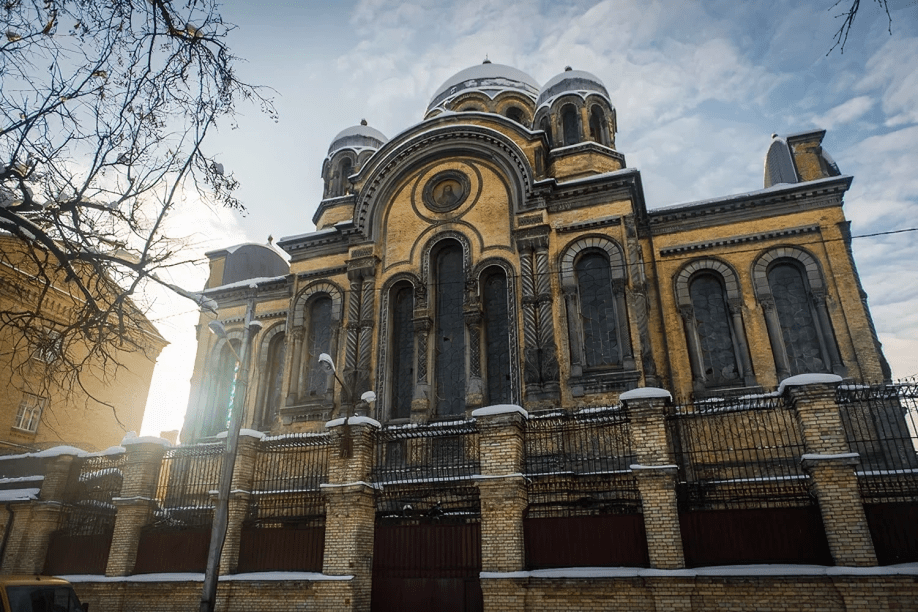
I Went to Prison in Vilnius, Lithuania, and You Can Too
There is not in fact much imagination necessary at all, as very little has altered since the last prisoners were released in 2019, and today the complex houses artists' studios, bars, and function rooms in the most austere of shabby buildings.
Lukiškės prison complex was built in 1904, and it replaced monasteries that during the 19th century had been used as prisons when Lithuania was part of the Russian Empire. It was one of the most state-of-the-art confinement facilities then, with a number of its characteristics being peculiar. For example, this prison was unusually built in the very middle of the capital, right near the main streets. The prison had separate rooms for punishment, administration, medical care, kitchen, bakery, baths, wine cellar, ice cellar, laundry, and one peculiarity of this prison is that it was the only prison to accommodate Russian Orthodox, Roman Catholic, and Jewish worship. But while little remains of the Roman Catholic Chapel, the Orthodox Church of Saint Nicholas still stands towering above the multi-fenced perimeter.
Although the Lukiškės Prison complex has survived everything that both World Wars and the Soviet occupation could throw at it, it housed many a political prisoner, Lithuanians, Belarusians, Poles, Jews—anyone who happened to become out of favor with the regime. Here were imprisoned famous social activists, political figures, writers, and signatories of the Act of Independence of Lithuania. While originally designed for about 700, the numbers swelled to thousands at any one time with up to eight crammed into tiny cells.
Things improved with the start of Lithuania's application to join the European Union, for it suddenly had to pay more attention to its human-rights principles. The numbers of prisoners went down, and a bit of comfort was added to the cells.
For more than one hundred years, Lukiškės operated as a prison. Upon its becoming open to the public in a much-heralded debut earlier in the year, it was rechristened as Lukiškės Prison 2.0. At that point, the title signified a fresh start. There are artists, musicians, and creators working within various spaces of the building; there is music, culture, and art, as well as all kinds of events in its interior and private functions. The facade and interior of the prison remain in an untouched state, and knowledgeable guides lead people through 100 years of history of the place.
A Guided Tour of Lukiškės Prison 2.0
Now, the guided tour began from the very entrance to the prison, next to the grid where the vehicles were checked for forbidden things. We moved further to the reception area where the prisoners were registered upon arrival. They would spend up to six hours in tiny rooms called shoeboxes while their cases were looked into. Then they were searched for illegal objects and scanned for metal inside their bodies. It was distressing to learn that an iPhone had been found in a convict. Apparently putting in huge items requires some training, but the small mobile is quite easy to conceal.
We went up several flights of steps to the top corridor where the worst offenders were held. Cellmate combinations were strictly regulated: no mixing of sexes, and juveniles, of course, had a separate area. In the basement, there were single-occupancy cells for solitary confinement, sometimes for six months. Here, prisoners hoping for a reprieve from the death sentence were also kept. The executions took place inside the prison, with one executioner using one rifle. Only in 1998 was the death sentence finally abolished in Lithuania.
Outside the prison building itself are a number of roofless cells in which the worst criminals could only stand and see the sky. The rest of the day, they spent in their cells; all meals were distributed to them in their cells. Other prisoners could attend educational courses. Now, these outdoor cells are partially covered – it protects paintings by prisoners on the back walls. Electric fences and guard dogs went, but the high barbed walls are still there – impossible to escape.
There was only one successful breakout by an inmate through donning the identity of another who was due for release. He was only quickly recaptured. The other prisoner was held for another year before the 'mistake' was noticed. Lukiškės had a reputation for mental cruelty
Lively music, clinking glasses, and chatter make today what was one the grimmest places in Lukiškės prison 2.0 one of the most happening attractions in Vilnius. It has also been used in the movies and commercials. One can easily relate to it as the prison cell shown in a series on Netflix, Stranger Things season 4, or a Gucci ad.



